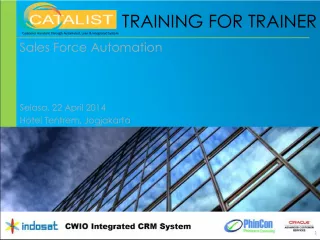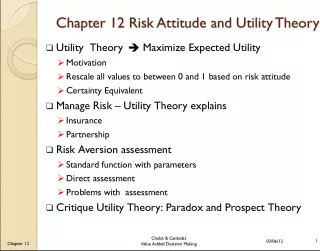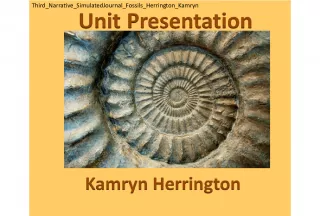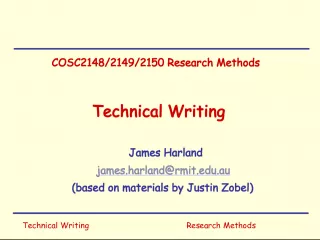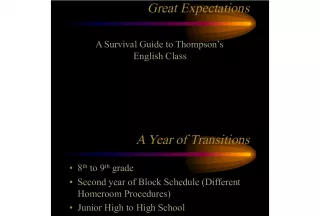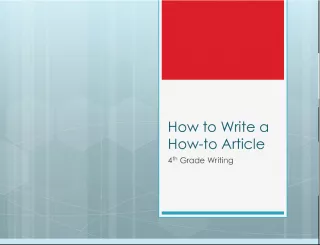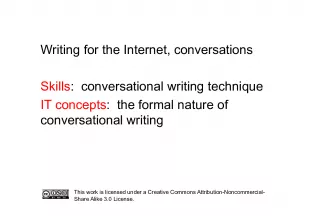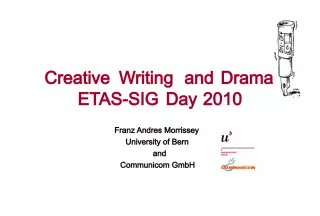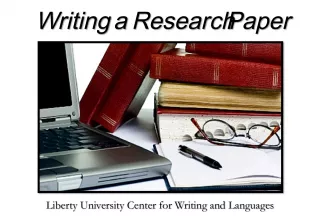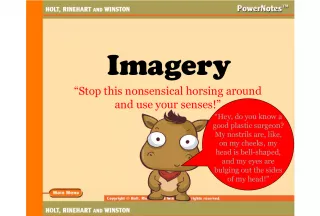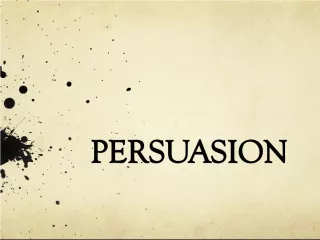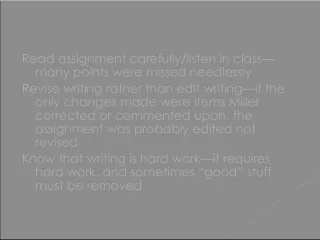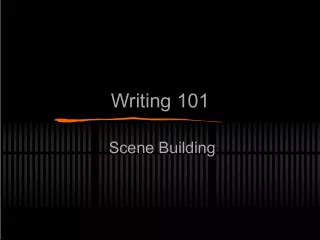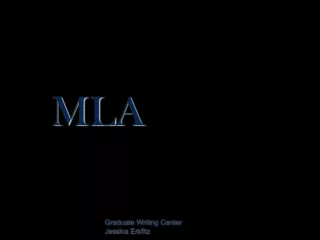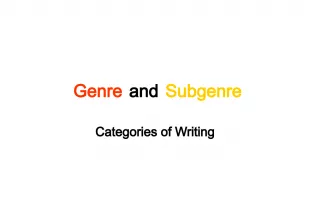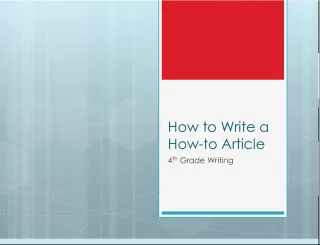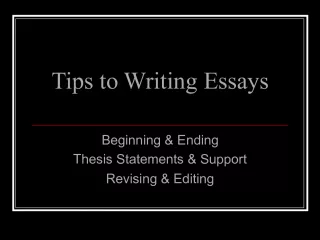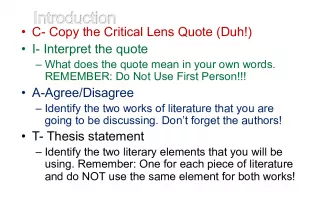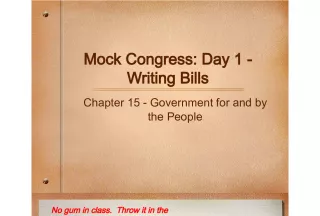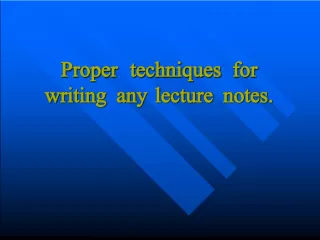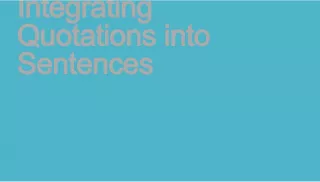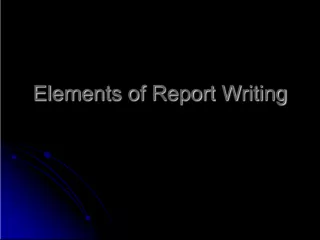Does the prospect Does the prospect of writing
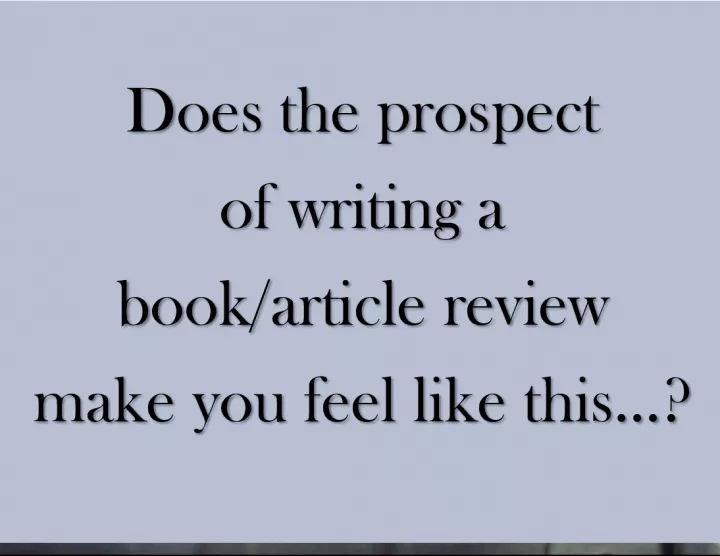

Does the prospect Does the prospect of writing a of writing a book article review book article review make you feel like this make you feel like this Book Article Review Book Article reviews are
- Uploaded on | 1 Views
-
 viivi
viivi
About Does the prospect Does the prospect of writing
PowerPoint presentation about 'Does the prospect Does the prospect of writing'. This presentation describes the topic on Does the prospect Does the prospect of writing a of writing a book article review book article review make you feel like this make you feel like this Book Article Review Book Article reviews are. The key topics included in this slideshow are . Download this presentation absolutely free.
Presentation Transcript
Slide1Does the prospect Does the prospect of writing a of writing a book/article review book/article review make you feel like this…? make you feel like this…?
Slide3Book/Article Review• Book/Article reviews are usually one of the first assignments given in the course of the semester. • A book/article review looks at the quality, meaning, and significance of a work of literature. It is a reaction paper – focusing on purpose, content, and authority – in which strengths and weaknesses of the material are analyzed. • It should examine what the author has tried to do, evaluate how well the author has succeeded, and presents evidence to support this evaluation.
Slide4Book/Article Review• The first step is to READ the book/article. • Allow yourself enough TIME to be able to thoroughly read and evaluate the book/article. • Read ACTIVELY and CRITICALLY ! – Engage with the text – Highlight and Underline passages – Write in the margins – Make predictions (and test them) – Ask questions (and answer them)
Slide5Book/Article Review• Typical book/article reviews consist of two parts: – Summary & Analysis • Occasionally a professor will want additional info. – Bibliographical Material – Personal Opinion – Career/Ministry Application • There is no standard, discipline-specific way to write a book/article review. – Often a professor will provide guidelines and format. – Otherwise, you may create your own outline.
Slide6Book/Article ReviewI. Introduction II. Summary III. Analysis A. Strengths B. Weaknesses IV. Conclusion Sample Outline
Slide7Book/Article Review• Summary – A summary is a brief, concisely written synopsis of the book/article. – A summary restates the author’s main point, purpose, intent, and supporting details in your own words. – Summaries are written to help you gain a better grasp of the original, as well as show that you have read and understand the assigned material.
Slide8Book/Article Review• Summary Tips – Summaries should be no longer than a quarter of your paper. • Usually a page or a two of summary is sufficient. • The majority of your paper should be devoted to the analysis. – Avoid a chapter-by-chapter summary. – Avoid quoting heavily from the source. • The summary should be in your own words.
Slide10Book/Article Review• Analysis – An analysis is a detailed evaluation of the thesis (arguments) presented by the author. – Relate the strengths and weaknesses of the book/article. • What is good and what is bad? • What did the author do well? Not well? • This does not communicate if you liked it or not.
Slide11Book/Article Review• Analysis Tips – You do not necessarily need to work chronologically through the book/article as you discuss it. • You can organize your paragraphs more usefully by themes, methods, or other elements of the book. – Keep comparisons to other books/articles brief so that the book under review remains in the spotlight. – Avoid excessive quotations or block quotes.
Slide12Book/Article Review• Analysis Tips – Review the book in front of you, not the book you wish the author had written. • Do not criticize the book for not being something it was never intended to be. – Present a balanced analysis. • Avoid voicing strong agreement or disagreement. • Harsh judgments are difficult to prove and can give readers the sense that you were unfair in your assessment.
Slide13Book/Article Review• Analysis Tips – Don’t be afraid to disagree with the author. – Cite specific examples to back up your assertions. – A good analysis requires time and critical thinking. • You must look “below the surface” and focus on the deeper issues present in the book/article. • As you read, constantly evaluate what you have read and make notes of your questions and thoughts.
Slide14Book/Article Review• Analysis Questions: – Who is the audience? Did the author communicate effectively to that audience? – What sources were used? Does the author use many quality academic sources to support what was written? – What are the authors presuppositions/preconceived notions? Does the author assume his/her readers to have a certain background or information?
Slide15Book/Article Review• Analysis Questions: – Does the author have the necessary expertise to write the book/article? – How does this book/article relate to other sources on the same topic? – Does the author define and use appropriate, academic terminology?
Slide16Book/Article Review• Analysis Questions: – Does the author present a clear thesis (argument)? What is the purpose of the book/article? – Does the author contribute anything new to the field? – Does the author exhibit any bias? Does the author have an inclusive worldview/writing style? – Are there errors in the author’s logic?
Slide17Sample Book ReviewN. T. Wright Paul: In Fresh Perspective Minneapolis, MN: Fortress Press © 2006
Slide18Sample Book ReviewSandra D. Wilson, Ph. D. Hurt People Hurt People Grand Rapids, MI: Discovery House Publishers © 2001
Slide19Sample Article ReviewMark Driscoll Answers to Common Questions about Creation TheResurgence.com © 2006
Slide20Sample Article ReviewS. J. Bujarski, et al. Marijuana use among traumatic event-exposed adolescents: Posttraumatic stress symptom frequency predicts coping motivations for use Addictive Behaviors © 2012
Slide21REFERENCES– Belcher, Wendy, “Writing the Academic Book Review.” http://www.chicano.ucla.edu/press/siteart/jli_bookreviewguidelines.pdf – Lee, Alexander D., Bart N. Green, Claire D. Johnson, and Julie Nyquist, “How to Write a Scholarly Book Review for Publication in a Peer-Reviewed Jounal.” The Journal of Chiropractic Education . http://www.journalchiroed.com/2010Spring/JCESpring2010Lee.pdf – Purdue OWL, “Writing a Book Review.” http://owl.english.purdue.edu/owl/resource/704/1/ – The Writing Center at UNC-Chapel Hill, “Book Reviews.” http://writingcenter.unc.edu/resources/handouts-demos/specific-writing-assignments/book-reviews – The University of New South Wales, Learning Centre, “Writing a Critical Review.” http://www.lc.unsw.edu.au/onlib/critrev.html – Columbia University Writing Center, http://www.columbia.edu/cu/ssw/write/handouts/summary.html – Los Angeles Valley College Library, http://www.lavc.edu/library/bookreview.htm – University of North Carolina at Chapel Hill Writing Center, http://www.unc.edu/depts/wcweb/handouts/review.html http://www.unc.edu/depts/wcweb/handouts/fallacies.html
